Forests Our Lifeline
Introduction to Forests
Forest Ecosystem: Forests are one of the most important ecosystems in the world. Forest our lifeline class 7 topic highlights the importance of forests in providing oxygen, shelter, and food to countless species, including humans. It also helps regulate the climate and mitigate soil erosion. This study guide will help you explore various aspects of forests, understand their significance, and learn how they connect to all forms of life on Earth.
Types of Forests in India and Their Features
India has a rich diversity of forests due to its varied climate, geography, and vegetation types. Understanding the different types of forests in India and their unique features helps us appreciate their role in the ecosystem and the environment.
Tropical Rainforests
Tropical Rainforests are also found in areas with high rainfall and temperature, such as the Western Ghats, Assam, and the Andaman Islands. They are thick, evergreen forests, full of biodiversity, including elephants, tigers and a variety of birds.
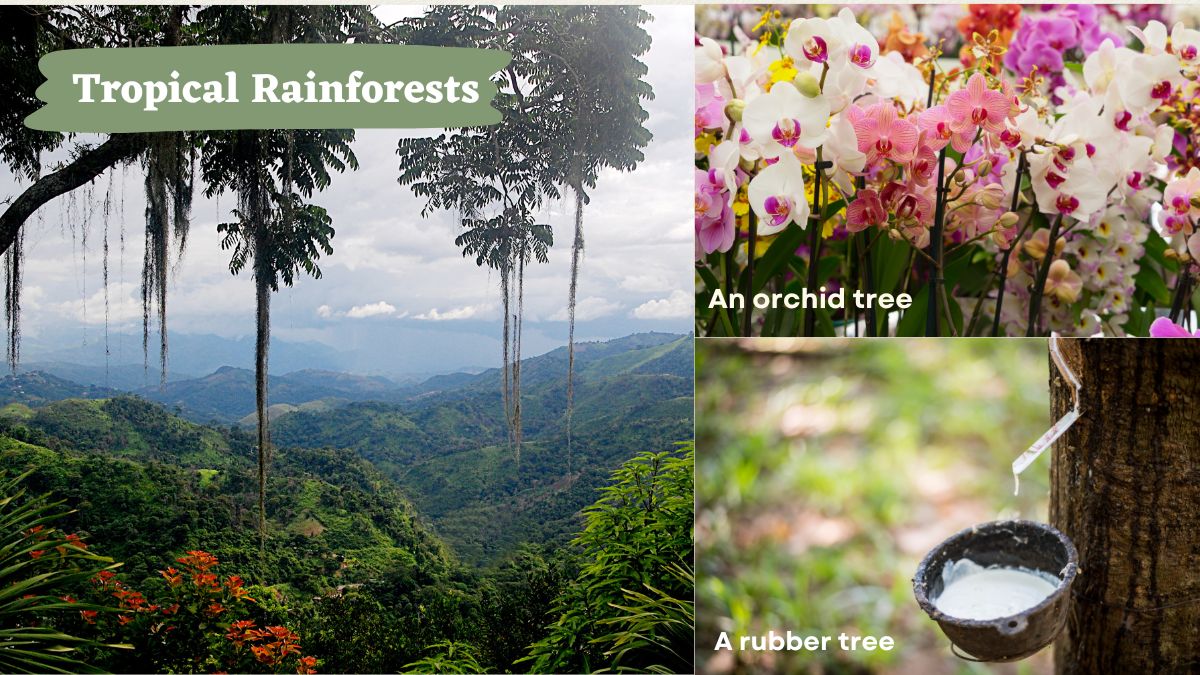
Features:
- The dense canopy that blocks much sunlight
- Extremely high biodiversity
- Evergreen trees that remain green year-round
- The abundance of medicinal plants used in traditional remedies
Tropical Deciduous Forests
Tropical Deciduous Forests in regions with moderate rainfall — parts of Madhya Pradesh, Chhattisgarh and Odisha. Trees in these forests lose their leaves in the dry season, allowing them to conserve water.
.jpg)
Features:
- Broad-leaved trees
- Seasonal shedding of leaves
- Rich in timber trees like teak and sal
Thorn Forests (Scrub Forests)
The dry regions with sparse rainfall like Gujarat and Rajasthan find them here, and consists mainly of thorny shrubs and small trees.
.jpg)
Features:
- Sparse vegetation
- Drought-resistant plants
- Thorny shrubs and trees
Coniferous forests:
Coniferous Forests consist of cone-bearing trees with needle-like leaves, commonly known as conifers. Cedar, fir, pine, redwood, etc. are some of the most common trees in coniferous forests.
These forests are found mainly in temperate forests and alpine vegetation, found in the Himalayan and higher altitudinal regions.
Features:
- Coniferous trees
- Cold climate adaptation
- Rich in pine, deodar, and fir trees
Mangrove Forests
Mangrove Forests grow along coastlines and tidal estuaries, such as the Sundarbans. These unique forests are made up of salt-tolerant plants specially adapted to thrive in saline water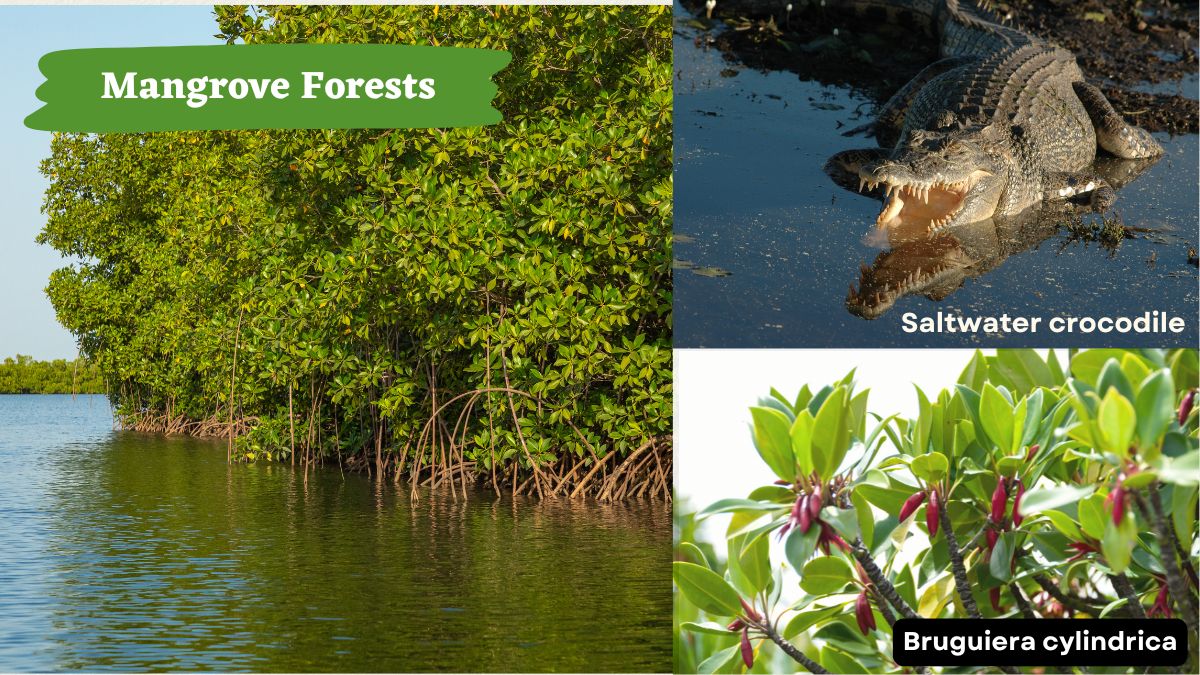
Features:
- Salt-tolerant species
- Dense roots and mudflats
- Important breeding grounds for fish
Types of forests promotes the knowledge of diversity of ecosystem and it also emphasizes the importance of life and nature on earth.
Structure of a Typical Forest and Its Main Features
A typical forest has several distinct layers, each supporting different kinds of plants and animals. From the nutrient-rich forest floor to the towering emergent trees, this layered structure creates a complex ecosystem that allows diverse forms of life to thrive.
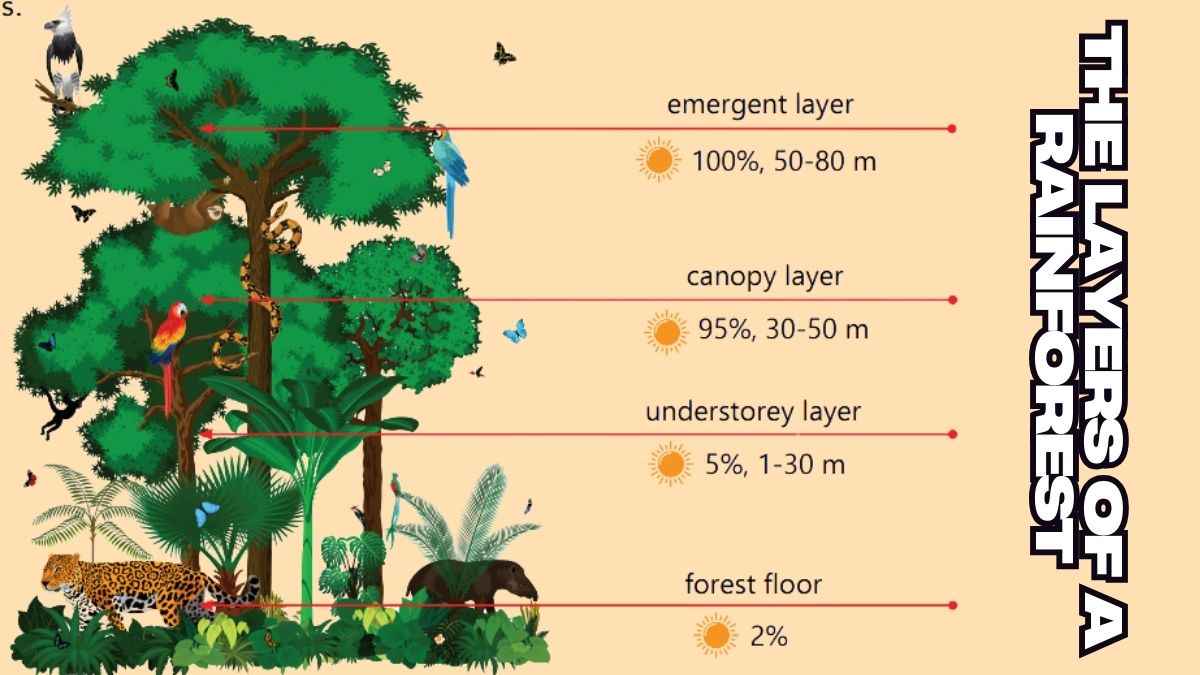
Forest Floor
The forest floor is the lowest layer of the forest where decomposers such as fungi, bacteria, and insects break down dead plants and animals into nutrients. This process enriches the soil, making it nutrient-rich and supporting the growth of small plants and insects.
Main Features:
- Rich in decomposed organic matter
- Hosts small plants and insects
- Nutrient-rich soil
Understorey Layer
The understorey layer of short trees and vegetation that gets limited sunlight.
Main Features:
- Home to small trees and shrubs
- Houses various animals like monkeys and birds
- Partial sunlight filtering
Canopy Layer
The canopy layer is formed by the tall trees whose branches and leaves create a dense roof over the forest. This layer supports a rich biodiversity and provides habitat to larger animals such as tigers, leopards, and many bird species.
Main Features:
- Home to larger animals like tigers, leopards, and birds
- Dense vegetation
- High biodiversity
Emergent Layer
The emergent layer consists of the tallest trees that grow above the canopy to reach direct sunlight.
Main Features:
- Tall trees that rise above the canopy
- Limited in number
- A haven for birds and insects that love high elevations
A normal forest structure is not haphazard; it is elaborately designed so that life can exist at different levels and fulfill individual functions to keep the ecosystem in a state of balance.
Interdependence of Plants and Animals
The interdependence of plants and animals is vital for maintaining a healthy ecosystem. In the Forest Our Lifeline topic, this relationship is explained through the mutual food habits and dependencies between plants and animals.
Classification of Living Organisms on the Basis of Their Food Habits
- Producers: The food chain begins with plants, which, by means of photosynthesis, are the main producers. They generated food for themselves and for other organisms.
- Consumers: organisms that eat either plants or other animals. These are divided into:
-
-
Primary consumers (Herbivores): Organisms that feed on or consume plants.
-
Secondary consumers: Carnivores that eat herbivores.
-
Tertiary consumers: Top predators that consume secondary consumers.
-
-
Decomposers: Fungi, bacteria,and other organisms that break down dead plants and animals, and recycle vital nutrients back into the soil.
Dependence of Plants on Animals
Animals depend on plants for pollination and seed dispersal. Birds, bees, and butterflies pollinate flowers so that plants can reproduce, for example. Certain animals like squirrels, monkeys, and birds perform the process of spreading of their seeds, which allows new plants to grow.
Dependence of Animals on Plants
Plants provide food, shelter and oxygen for animals. Plants are food for herbivores and living spaces for others (like birds nest in trees). Plants produce oxygen through photosynthesis; this oxygen is essential for animals' survival.
Food Chain
Food chain – a string of an ecosystem that shows energy flow. It begins with producers (plants) and then progresses upward through several levels of consumers. For example:
-
Grass (producer) → Grasshopper (primary consumer) → Frog (secondary consumer) → Snake (Tertiary consumer).
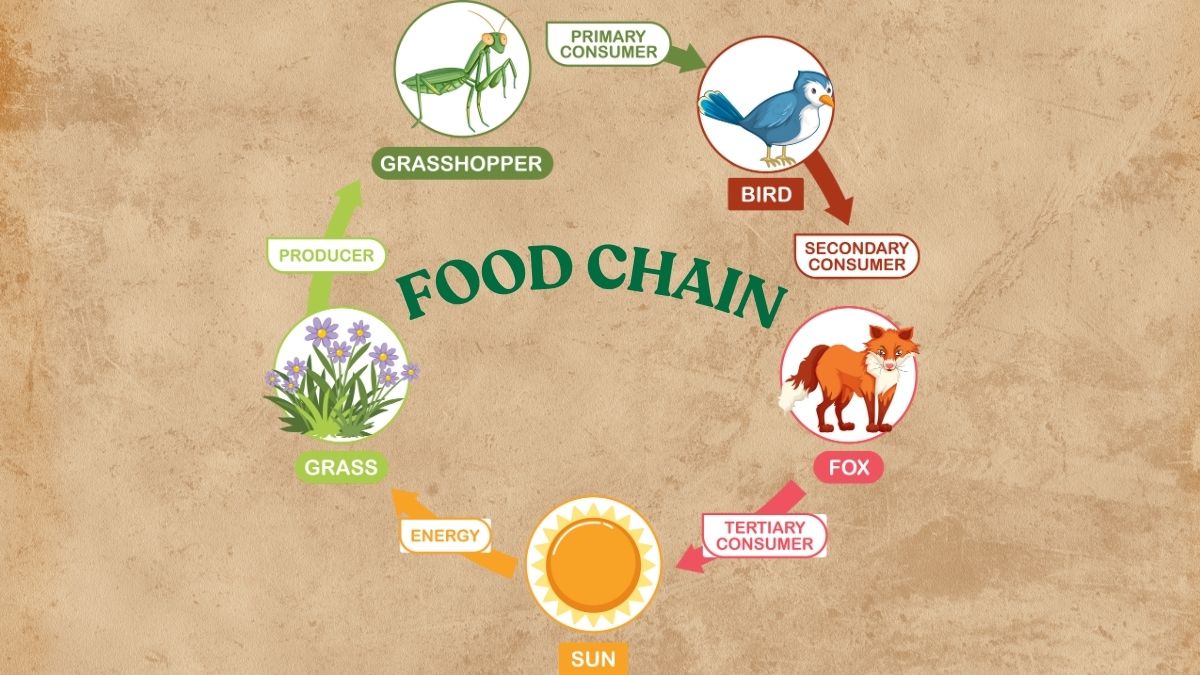
This would include food chain examples that show how energy and nutrients are transferred through ecosystems. It's each level in the food chain that is important for balancing everything in a forest or any place else.
Food Web
A food web is a network of food chains which are interconnected. It demonstrates the many feeding relationships among organisms in an ecosystem. For example, where a food chain shows the direct line of energy transfer from producer to consumer to predator, a food web is complex and shows the myriad of connections between different organisms.
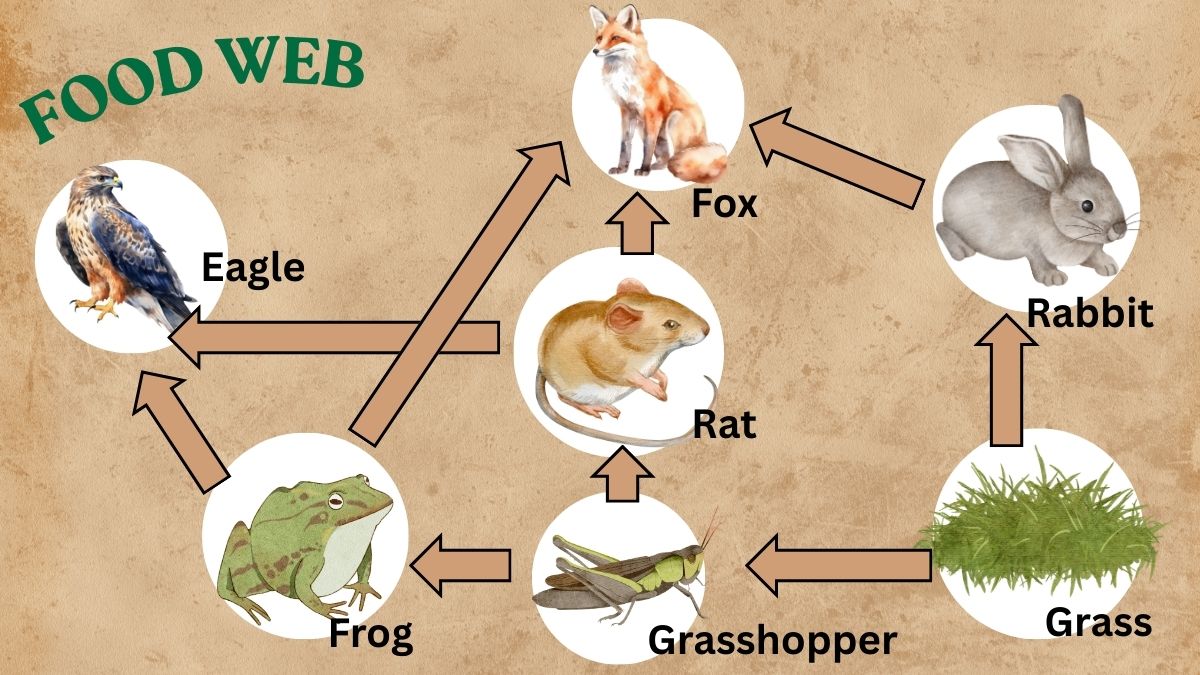
An answer key might include how in a forest a plant can be consumed by a herbivore that is then consumed by a carnivore and how decomposers break down all organisms after their death. Animal consumers are also divided, such as carnivores, whose food web shows them in a complex network of interactions, with plants at the base of that food web as the energy succor for the consumers.
Importance of Forests
Forests, sometimes called the “lungs of the Earth” for their ability to absorb carbon dioxide and produce oxygen, fill roughly 30 percent of the planet’s surface. The significance of forests.Visibility forests
- Climate Regulation: By absorbing carbon and releasing oxygen, forests regulate both the global and local climate.
- Biodiversity: Forests contain over 80% of all terrestrial species. They offer homes to millions of plants and animals.
- Water Cycle: One of the most significant contributions of forests is the maintenance of the water cycle; trees help to absorb and release water, rainfall, and even prevent droughts.
- Soil Conservation: Tree roots hold the soil together, preventing soil erosion and landslides.
- Economic Value: Forests are the source for timber, medicinal plants, fruits and several other resources which are vital for economy.
Conservation of Forests
As deforestation has transformed into a major menace of the world, conservation of forests is of utmost importance. Importance of Trees Conservation Then you might wonder what the importance of trees conservation is. I will provide with some methods for conserving the forests:
- Afforestation and Reforestation: The act of planting forests and regrowing forests.
- Sustainable Forestry: Growing trees and managing forests in a manner that allows them to regenerate naturally, while at the same time continuing to produce resources without using them up.
- Protecting Forests: Implementing the establishment of protected areas like national parks and wildlife sanctuaries initiated to curb illegal logging and encroachment.
- Promoting Awareness: Informing communities and individuals of the significance of forests and how they support life.
- Using Forest Products Sustainably: Make the sustainable use of forest products a resource and the alternatives available.
Forest conservation methods need to be in the world agenda of making forests our lifeline in eternity.
Fun Facts
-
Forests occupy about 31% of the total land area and they are home to an estimated 80% of the world’s terrestrial species!
-
The Amazon Rainforest is known as the “lungs of the Earth,” as it generates approximately 20% of the world’s oxygen.
-
The hermit fungus in Oregon's Malheur National Forest is actually the largest living organism in the world,smothering 2,385 acres (about 4 square miles)!
-
The “forest floor” of a temperate rainforest is so dark that it receives just 2 percent of direct sunlight, but it is home to all sorts of creatures that have evolved to do well in low-film lighting conditions.
Things You Have Learned!
-
Forests are essential ecosystems that promote biodiversity.
-
India has varied forests: tropical, deciduous, thorn, coniferous and mangroves.
-
Forests have multi-layered structures: forest floor to emergent layer.
-
Plants and animals depend on each other for food, oxygen, and reproduction.
-
Food chains and food webs indicate energy flow in ecosystems.
-
Forests assist in climate regulation, water cycle, and soil conservation.
-
Conservation techniques include afforestation and sustainable forestry
CBSE Schools In Popular Cities
- CBSE Schools in Bangalore
- CBSE Schools in Mumbai
- CBSE Schools in Pune
- CBSE Schools in Hyderabad
- CBSE Schools in Chennai
- CBSE Schools in Gurgaon
- CBSE Schools in Kolkata
- CBSE Schools in Indore
- CBSE Schools in Sonipat
- CBSE Schools in Delhi
- CBSE Schools in Rohtak
- CBSE Schools in Bhopal
- CBSE Schools in Aurangabad
- CBSE Schools in Jabalpur
- CBSE Schools in Jaipur
- CBSE Schools in Jodhpur
- CBSE Schools in Nagpur
- CBSE Schools in Ahmednagar
- CBSE School In Tumkur











